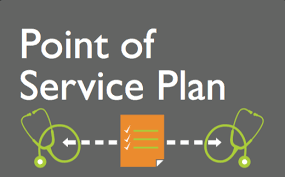Do You Know: What is a Point of Service (POS) Plan?
Aug 06, 2022 By Susan Kelly
Introduction
What is a Point of Service (POS) plan? The term "point-of-service plans" (POS) refers to a managed care program that incorporates both HMO and PPO plans. Participants select an in-network doctor as their primary healthcare provider, much like an HMO. Contrary to a PPO, patients can access healthcare outside the provider network. Individuals who opt out of networks will be responsible for most of the costs unless their primary care physician has recommended an out-of-network provider. The medical insurance will cover the cost.

The Operation of a Point-of-Service Plan
A POS plan has aspects that both HMO and PPO plans have. Since POS plans let you choose a primary care physician to monitor and coordinate your medical care, they operate similarly to HMOs. A primary care physician from a list of specialists. Should you desire professional assistance, you must make an appointment with them.
HMO-POS Strategy
Today's health maintenance organizations (HMOs) differ from past ones. A point of service (POS) option is also provided by some HMOs. Most HMOs provide care through a network of hospitals, doctors, and other healthcare providers you must consult to be insured for your medical care. If you have an HMO-POS, you can receive treatment outside the network, but you'll pay more.
It would help if you decided on a primary care physician (PCP) who will handle all your medical requirements. Most of the time, you can visit an expert without making an appointment, but your doctor might be able to help you get an appointment sooner. Prior authorization must be obtained from your physician to get some services. You might not be insured for some of the services if you don't have prior authorization.
It is crucial to remember that the POS and HMO components of the plan each have separate deductibles. The HMO's in-network deductibles differ from the POS's out-of-network deductibles for healthcare services. There is no way to combine the two deductibles; each must be paid in full.
PPO Policy
Choosing providers who are a part of the PPO network is rewarded financially under a preferred provider organization (PPO) plan. This is due to contracts the health insurance has made with network PPO providers to offer health care at a lower cost. You can receive treatment outside the network, but the cost will be higher.
While choosing a doctor's appointment is not required, doing so might help you coordinate your care and ensure that your health needs are satisfied. There is no need for professional assistance, but you will need to schedule appointments with other specialists and healthcare providers. You do not need prior authorization for services the network will not cover. When paying for treatments, you combine the amounts you pay for your out-of-network and in-network deductibles. They are not required to be paid separately.
Benefits of POS
Lower co-pays and no deductibles are the main advantages of purchasing POS's health insurance plan through an insurance broker. When you acquire the POS plan, you usually won't have a deductible, and co-payments for visits to medical facilities or providers typically range from $10 to $20.
The POS health insurance plan's premiums are typically around one-third less expensive than PPO plans. Without a deductible, all out-of-pocket costs are minimized. One of the most significant advantages of POS health insurance is flexibility. Compared to other plans like HMO, POS plans often offer a higher percentage of benefits both in and outside of the network. POS Health insurance benefits are not only available to local hospitals and doctors. Contrary to PPO plans, which restrict benefits to providers in-network within a particular geographical area and state POS, local restrictions do not apply to these plans.
POS Health Insurance Drawbacks
Most POS programs also require a reference from your health care physician. Getting an appointment is becoming increasingly time-consuming and challenging for many people. Because of this, some consumers may choose a PPO-like plan that enables referral-free visits to any specialist and healthcare provider in the network.
Another disadvantage is the amount of paperwork that POS healthcare insurance members frequently deal with. A member must pay the service's total cost in advance if they see a health provider outside their network, which isn't always possible due to financial restrictions. The patient must next submit a request for reimbursement and wait for a response from the insurance company. The services you receive might not be covered or only partially paid if you don't acquire a referral from your primary healthcare practitioner. The price for providers outside of the network could be very high.

Conclusion
Point-of-service (POS) programs often have lower rates but a smaller provider selection. POS plans are similar to health maintenance organizations (HMOs) but permit patients to access non-network providers. When using an out-of-network service, the POS policyholder is in charge of filling out all the paperwork.

Aug 08, 2022 Triston Martin

Sep 03, 2022 Triston Martin

Dec 11, 2022 Triston Martin

Nov 11, 2022 Susan Kelly

Dec 10, 2022 Triston Martin

Oct 12, 2022 Susan Kelly